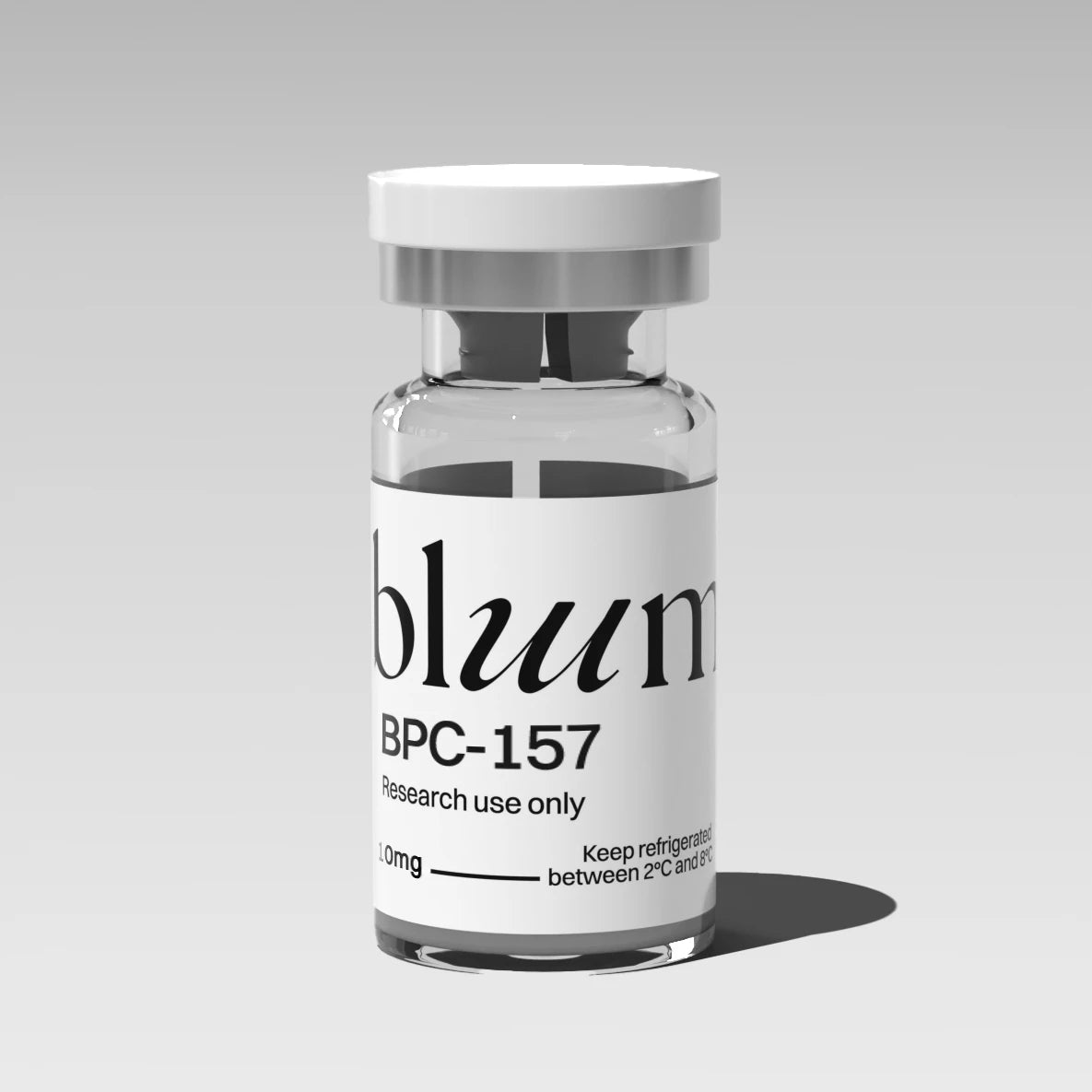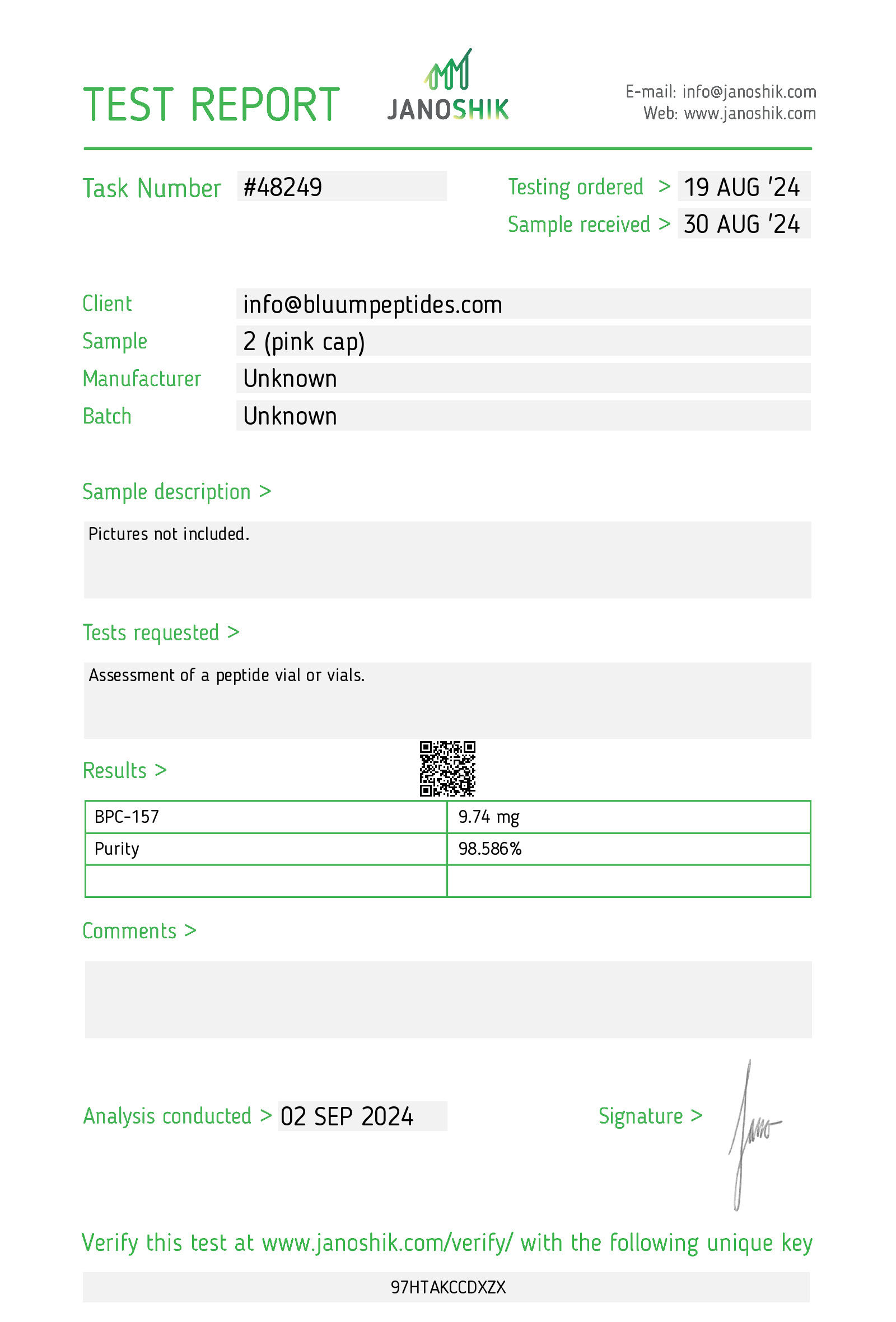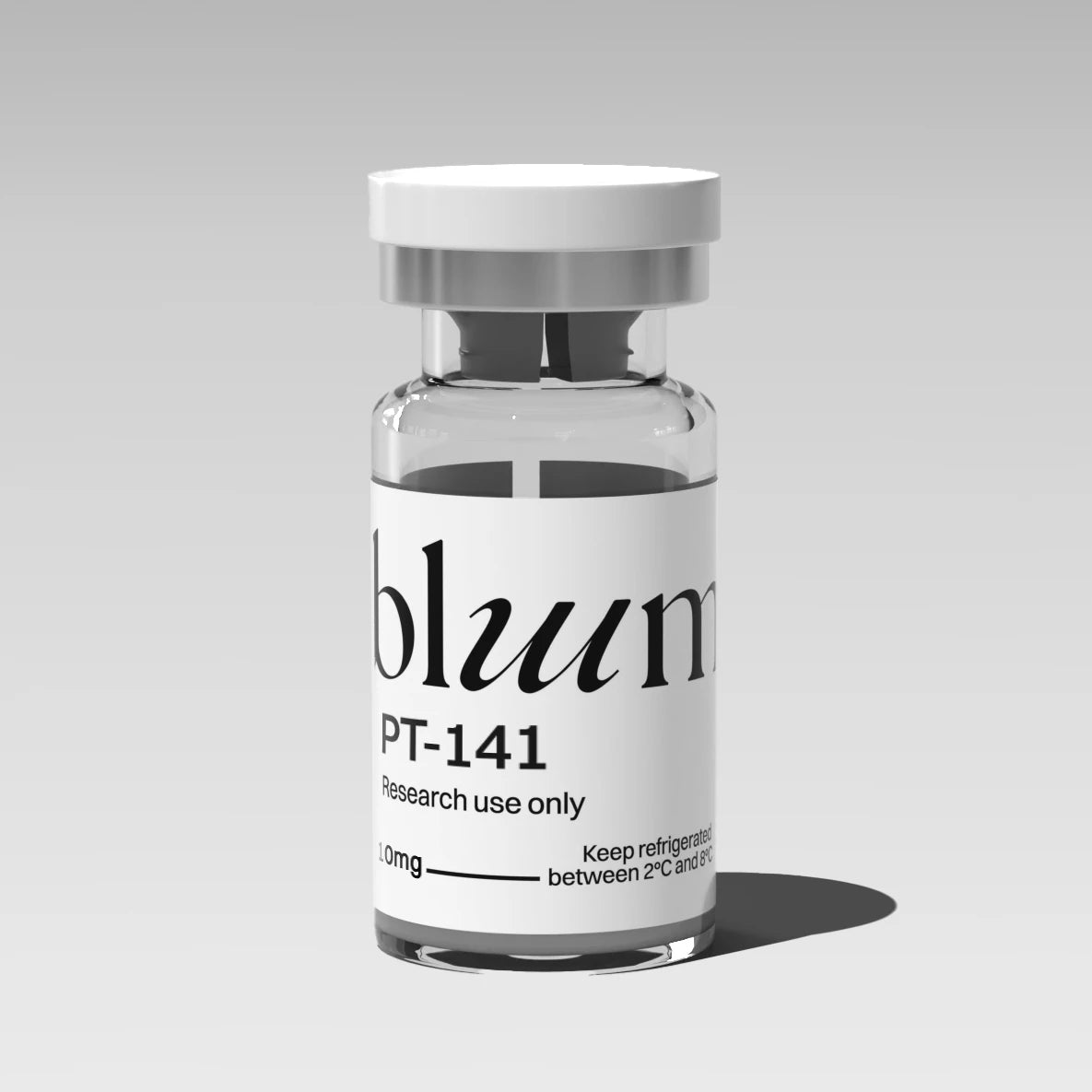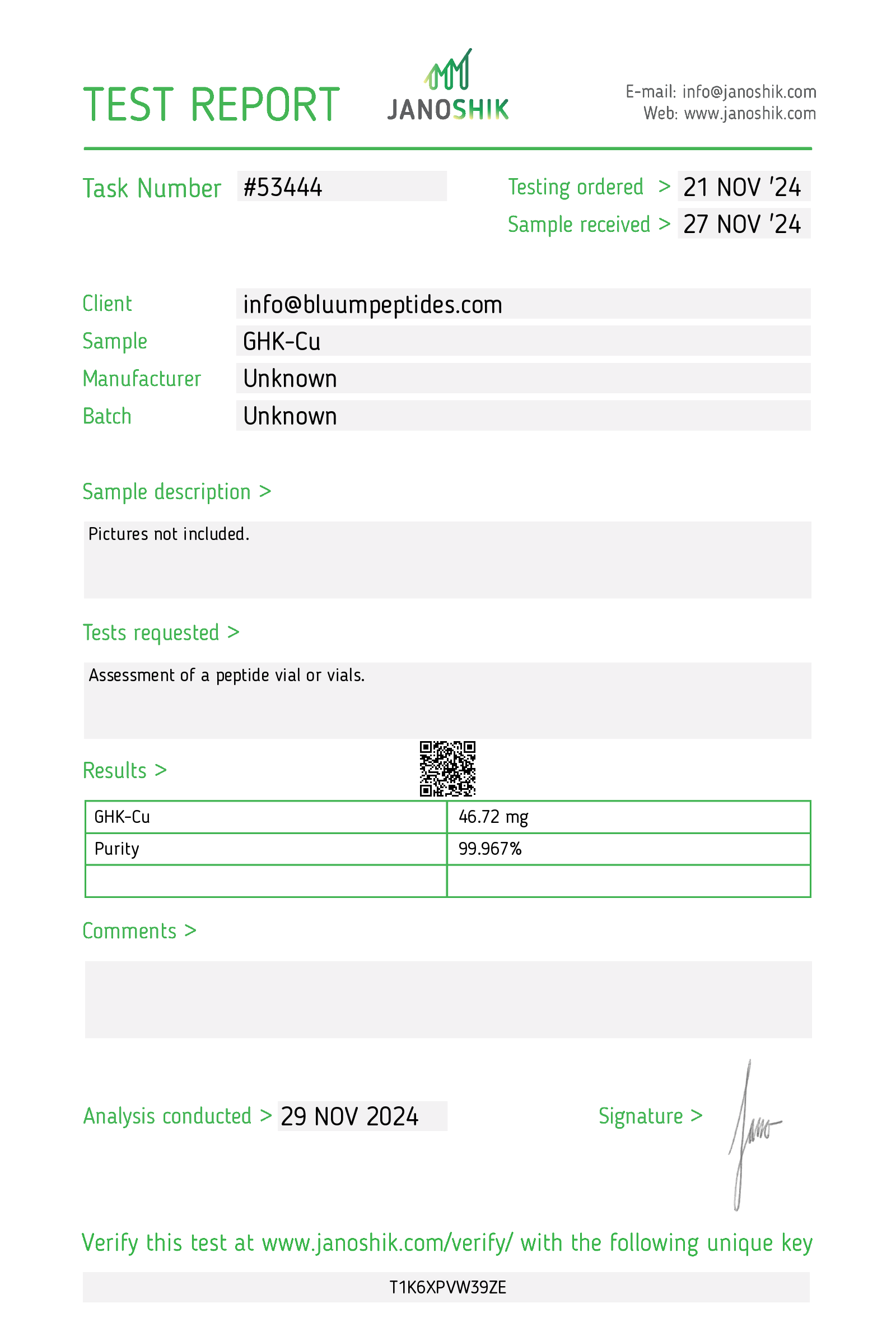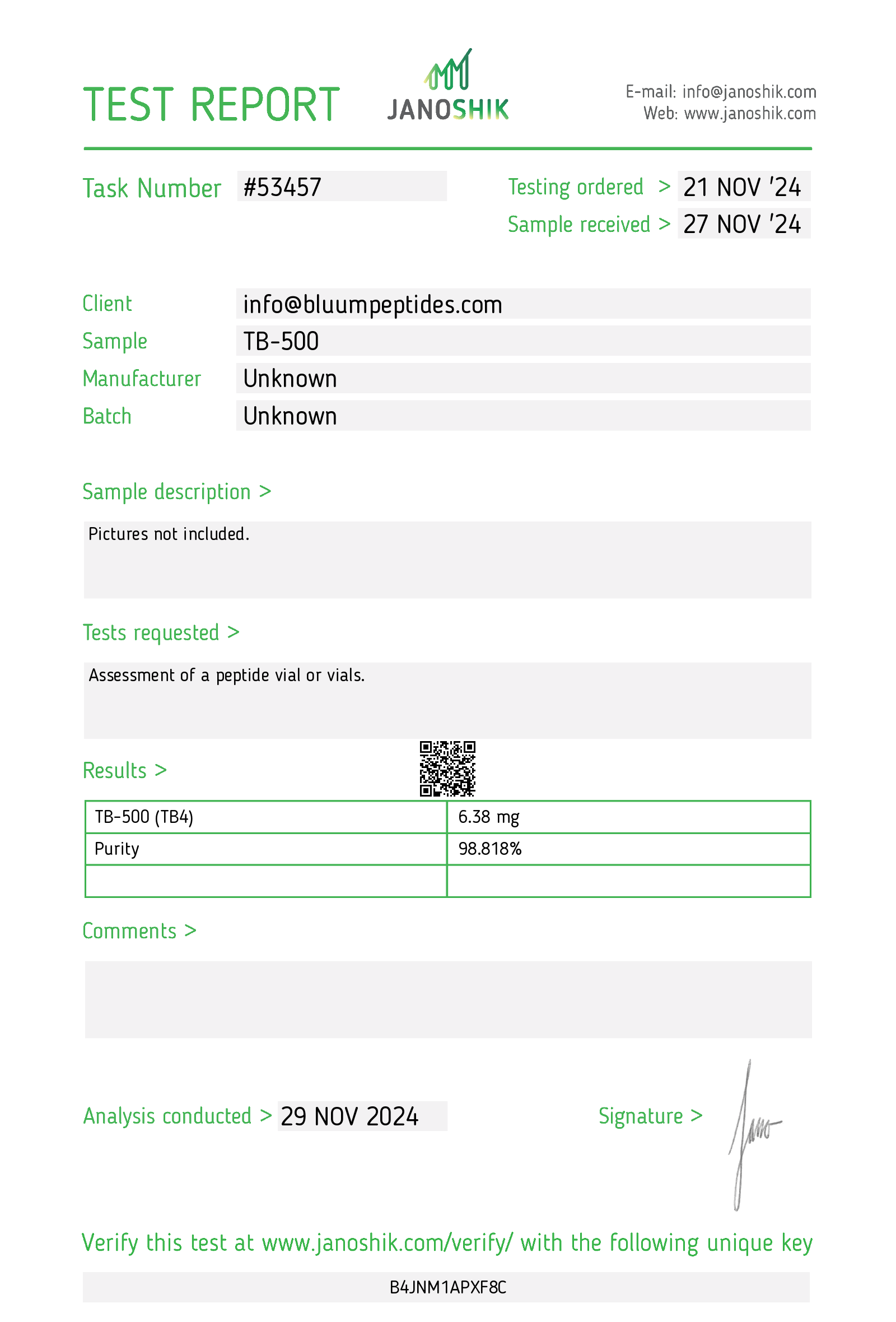

IGF-1 LR3
RESEARCH USE ONLY
These compounds are NOT intended for human consumption, clinical use, or veterinary applications. We are not affiliated with any pharmaceutical companies or their commercial medications. By placing an order, you certify these materials will be used exclusively for in vitro testing and laboratory experimentation only. Bodily introduction of any kind into humans or animals is strictly forbidden by law. This product should only be handled by licensed, qualified professionals. This product is not a drug, food, or cosmetic and may not be misbranded, misused or mislabeled as a drug, food or cosmetic.

About IGF-1 LR3
IGF-1 LR3 (insulin-like growth factor-1 long arginine 3) is a synthetic variant of insulin-like growth factor-1. Its reduced binding to IGF-1 binding proteins allows it to remain active up to 120 times longer than standard IGF-1 resulting in an extended half-life and increased efficacy. IGF-1 LR3 has been investigated for its potential role in tissue repair and cellular growth.
| Product Specifications | |
|---|---|
| Application | |
| Appearance | |
| Chemical Formula | |
| PubChem CID | |
| CAS Number | |
| Molecular Weight | |
| Synonyms | |
| Storage |
IGF-1 LR3 Research
1) Clinical Overview
IGF-1 LR3 (Long R3 IGF-1) is a bioengineered analog of human IGF-1 that retains the full IGF-1 sequence with a Glu→Arg substitution at position 3 and a 13-amino-acid N-terminal extension. These changes markedly reduce affinity for IGF-binding proteins (IGFBPs), increasing bioavailability at the IGF-1 receptor (IGF1R) and enhancing potency in vitro. LR3 is widely used as a cell-culture supplement to promote survival and productivity at concentrations far lower than insulin or native IGF-1; it is not approved for therapeutic use in humans.
2) Human Clinical Findings
Controlled human trials of IGF-1 LR3 specifically are not available in the published literature; most clinical data involve native recombinant human IGF-1 (mecasermin), which is FDA-approved for severe primary IGF-1 deficiency in children and has its own risk profile. Trials of native IGF-1 for other indications (e.g., ALS) have not shown clear benefit. Accordingly, LR3’s human efficacy and safety remain unestablished.
(For context only) Selected non-human studies show mixed physiological effects: continuous LR3 infusion in pigs reduced growth rate and suppressed endogenous GH/IGF-axis hormones, and LR3 has been used to modulate protein metabolism in livestock models. Species responses vary and should not be extrapolated to humans.
3) Mechanism & Effects
Receptor activation and IGFBP evasion. IGF-1 LR3 activates IGF1R to drive downstream PI3K–Akt and MAPK signaling (myogenic, metabolic, survival pathways). Its engineered sequence confers much lower IGFBP affinity, increasing the fraction of free ligand available to bind IGF1R compared with native IGF-1. Comparative binding/structure papers and IGF system reviews detail these features and the central regulatory role of IGFBPs.
In vitro potency / bioprocess use. In mammalian cell culture (CHO, HEK293), LR3 supports cell growth and viability and can replace high-dose insulin at 100- to 200-fold lower concentrations, improving recombinant protein yields in serum-free media.
Physiology in animals. In vivo effects depend on species, dose, and exposure pattern. For example, LR3 reduced feed intake and growth in pigs while suppressing circulating IGF-1, IGFBP-3, insulin and GH, highlighting feedback within the GH/IGF axis.
4) Safety & Considerations
Regulatory status. IGF-1 LR3 is not an approved drug for humans; products marketed online are unregulated. By contrast, mecasermin (rhIGF-1) is approved for specific pediatric indications and carries labeled risks.
What we can infer (from rhIGF-1, not LR3). With approved rhIGF-1 therapy, the most frequent adverse reactions are hypoglycemia, tonsillar hypertrophy, and hypersensitivity; intracranial hypertension has been reported. These data do not establish LR3’s human safety, but they illustrate class risks tied to potent IGF-1 signaling.
Sport / anti-doping. IGF-1 and its analogues are prohibited at all times under the WADA S2 class (Peptide hormones, growth factors, related substances).
References
- Laajoki LG, et al. Solution structure and backbone dynamics of long-[Arg(3)]IGF-I. Eur J Biochem. 2000. (Defines Arg3 substitution + N-terminal extension).
- Yang Y, et al. Probing the Folding Pathways of Long R3 IGF-1. J Biol Chem. 1999. (Structural features of LR3).
- Voorhamme D, et al. LONG R3IGF-I as a more potent alternative to insulin in serum-free culture of HEK293 cells. Mol Biotechnol. 2006. (Cell-culture potency).
- Dahodwala H, et al. CHO cells producing monoclonal antibodies… Biotechnol Prog. 2011. (LR3 improves growth/productivity in CHO).
- Forbes BE, et al. Characteristics of binding of IGF peptides and analogues to IGF1R. FEBS Lett. 2002. (Receptor binding comparisons).
- Clemmons DR. 40 Years of IGF-1: Role of IGF-binding proteins in IGF-1 physiology. J Mol Endocrinol. 2018. (IGFBP biology).
- Dunaiski V, et al. Long [R3] IGF-I reduces growth and alters GH/IGF axis in pigs. J Endocrinol. 1998. (In vivo pig study).
- Regulatory/label context (native rhIGF-1): INCRELEX® (mecasermin) prescribing information; Fintini D. Ther Clin Risk Manag. 2009 review; FDA ALS docket summarizing IGF-1 trials.
- Anti-doping: World Anti-Doping Agency. 2025 Prohibited List. S2 (IGF-1 and analogues).
You ask,
we answer.
Are these peptides quality tested?
Are these peptides quality tested?
Absolutely. Our analytical testing is conducted by Janoshik Analytical, an independent third-party laboratory to verify the identity, purity, and composition of our research products. Each CoA includes purity analysis, peptide sequence confirmation, and date of analysis.
What are typical delivery times?
What are typical delivery times?
Delivery for our free shipping option typically takes 3-5 business days. We ship from right here in the USA to all US addresses. We also provide an option for next day shipping for an extra charge. Please allow 24 hours for processing.
Every package comes with professional packaging, tracking updates via email, and does not require a signature upon delivery.
How should these compounds be stored?
How should these compounds be stored?
Our peptides are shipping in lyophilized form, which is stable at room temperature during transit. Once received, store unopened vials in a cool, dry place.
Are products stable during shipping?
Are products stable during shipping?
Our peptides are shipped in lyophilized (freeze-dried) form, which ensures stability during transit. This powder form is highly stable at room temperature and resistant to temperature fluctuations that occur during shipping.
Research has shown no significant degradation or loss of purity when lyophilized peptides are exposed to room temperature during typical shipping timeframes. Each batch is verified for purity upon production, and our stability testing confirms maintenance of product integrity during standard shipping conditions.
What are your bulk ordering options?
What are your bulk ordering options?
For bulk inquiries and volume pricing, please contact us.
What is your return/refund policy for research peptides?
What is your return/refund policy for research peptides?
All sales are final. Since we're dealing with sensitive research compounds that require strict quality control, we can't accept returns or exchanges.
Questions about your order? We're happy to help - just reach out.
What payment methods do you accept?
What payment methods do you accept?
We accept credit/debit cards, Cash App, and Apple Pay. After you place an order, we'll email you a secure payment link. Please complete payment within 48 hours. Unpaid orders are automatically canceled after that window.
If you don't see the email, check spam/promotion or contact support and we'll resend the link.
Are these peptides legal to buy for research in the USA?
Are these peptides legal to buy for research in the USA?
Yes. When purchased for laboratory/research use only and handled in compliance with all applicable federal, state, and local regulations. We sell reagents labeled “Not for human consumption,” not as drugs or supplements.
Some compounds may be restricted in certain jurisdictions. The buyer is responsible for knowing and following their local rules.
Do I need a business or institutional account to order?
Do I need a business or institutional account to order?
No. Individual researchers, labs, and institutions can order. During checkout you must confirm research intent and agree to our Terms. For certain items or larger orders, we may request additional verification or documentation and reserve the right to decline orders that don’t meet compliance standards.
What is the shelf life/expiration of unopened vials?
What is the shelf life/expiration of unopened vials?
Each lot lists a best-by/expiration on the vial label and COA. As general guidance, lyophilized peptides stored as directed are typically stable 12–24 months (often longer at –20 °C). Short shipping periods at ambient temperature are normal. Actual stability depends on sequence and storage conditions.
